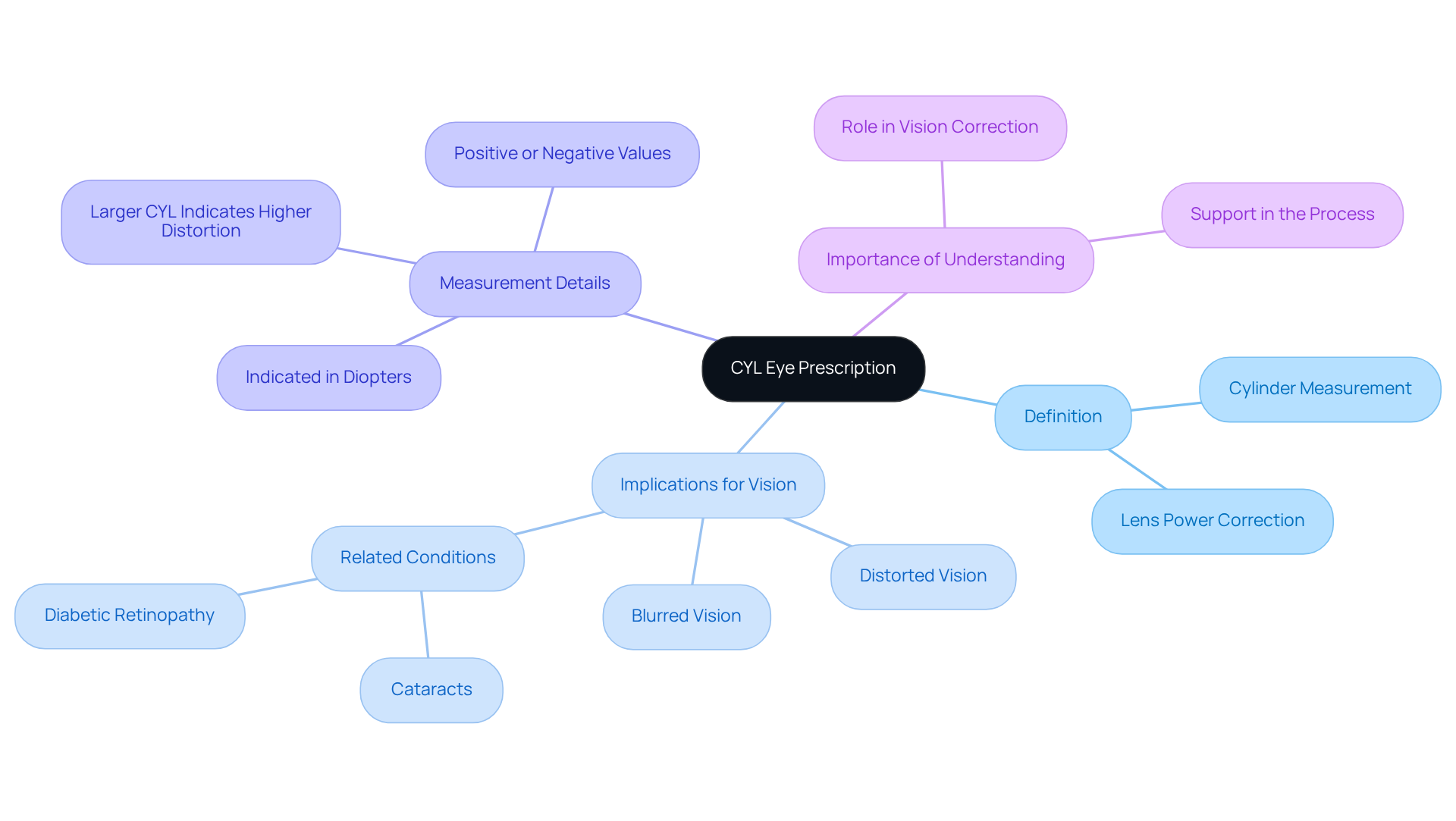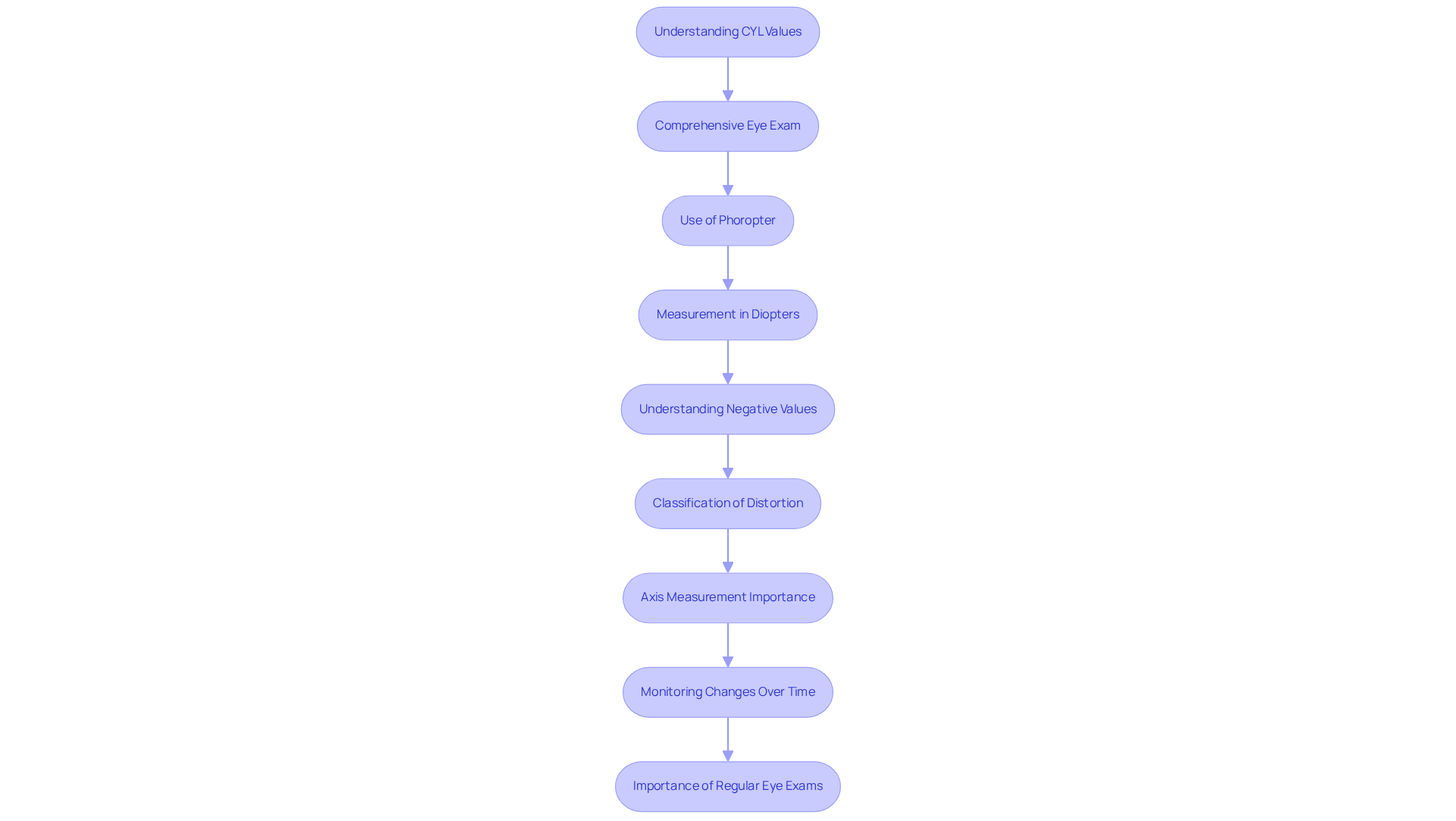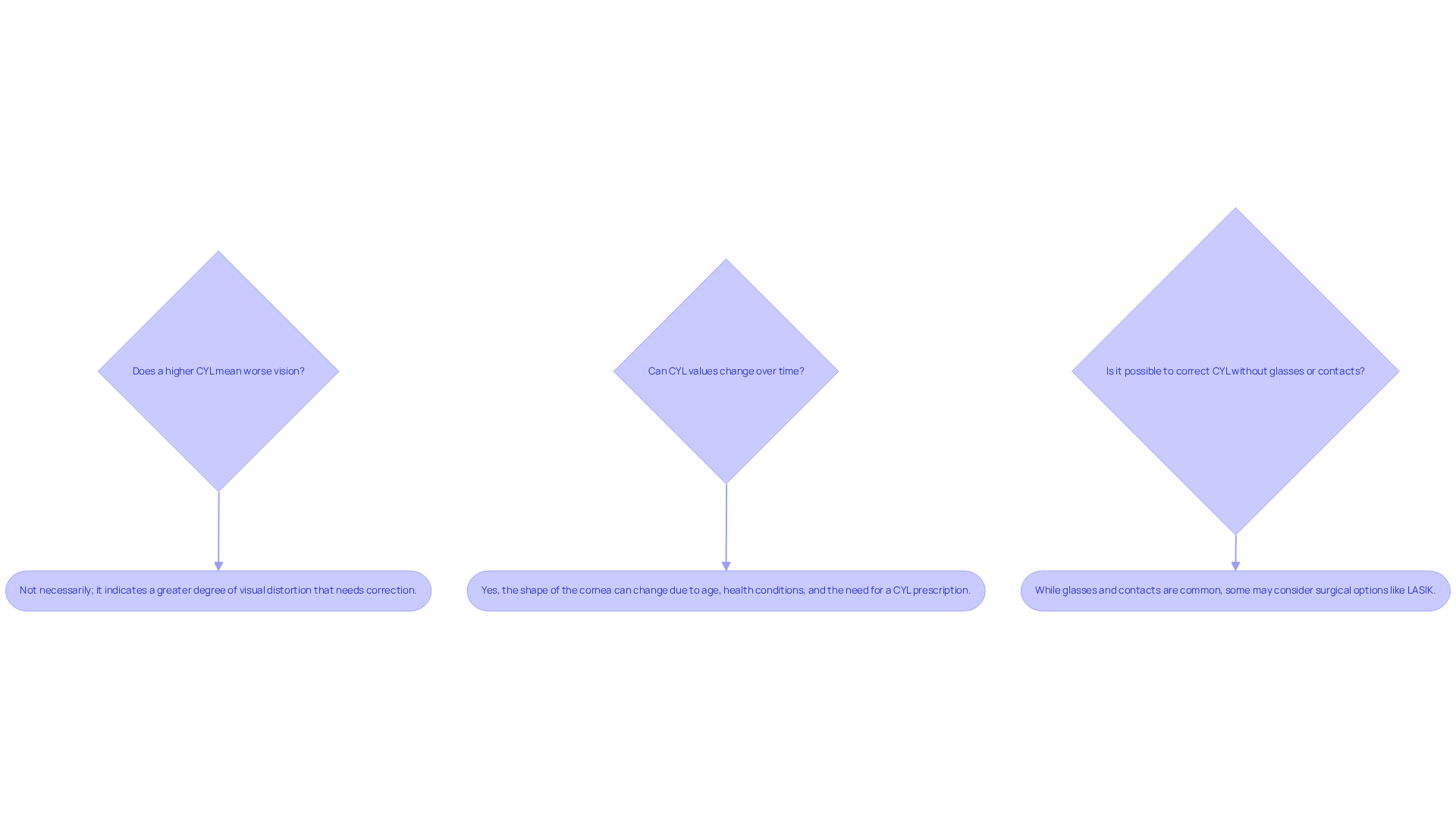Posted by: Northwest Eye in General on October 4, 2025
Overview
This article aims to shed light on the significance and interpretation of the CYL measurement in eye prescriptions. We understand that navigating eye health can be a concern, especially when it comes to correcting astigmatism and other refractive errors. The CYL values play a crucial role in this process, and it’s important to know how they are measured and what they mean for visual distortion.
Regular eye exams are essential for monitoring changes over time. These check-ups not only help in understanding your eye care needs better but also provide reassurance that you are taking proactive steps towards maintaining your vision. We are here to help you through this process, ensuring that you feel supported and informed every step of the way.
Introduction
Understanding the complexities of eye prescriptions can often feel daunting. We understand that when it comes to the CYL measurement, which plays a pivotal role in correcting astigmatism, many individuals may have concerns. This cylindrical measurement reflects the degree of visual distortion and determines the type of lenses needed for clearer vision.
It’s common to grapple with questions about what these values truly mean and how they impact your eye care journey. Remember, a higher CYL value doesn’t necessarily equate to worse vision. Together, we can navigate the nuances of these prescriptions effectively.
Clarify the Role of CYL in Eye Prescriptions
The CYL eye prescription, which stands for cylinder measurement, indicates the amount of lens power required to correct a common refractive error characterized by the eye’s imperfect roundness. We understand that this irregular shape can lead to , which may also be a symptom of other conditions such as cataracts or diabetic retinopathy. The measurement for the cyl eye prescription is indicated in diopters and can be either positive or negative, depending on the characteristics of the condition. A larger cyl eye prescription indicates a higher level of visual distortion that requires adjustment.
It’s common to feel uncertain about these terms, but understanding the role of the CYL measurement is essential. It helps you appreciate why specific lenses are prescribed and how they will improve your visual clarity. We are here to help you through this process, ensuring you feel supported every step of the way.

Explain How CYL Values Are Measured and Interpreted
Understanding your vision needs is important, and the cyl eye prescription plays a crucial role in that journey. During a comprehensive eye examination, eye care specialists use a phoropter—a tool designed to assess visual distortion with precision. These measurements, expressed in diopters, typically range from -0.25 to -6.00 or even higher. When you see a , it indicates the necessity of a cylindrical lens to correct any vision distortion. For example, a cyl eye prescription showing -1.50 CYL reflects a moderate level of distortion that requires attention.
We understand that grasping these principles can feel overwhelming, but they are essential for ensuring accurate measurements during your exam. The intensity of refractive error can be classified based on cyl eye prescription measurements, with lower readings (like -0.25 to -1.00) suggesting mild distortion, while higher readings (such as -2.00 and above) indicate a more significant issue. Additionally, the axis measurement, a positive value between 0 and 180 degrees, is vital for defining the orientation of your vision correction.
Regular eye exams are not just a routine; they are essential. The CYL eye prescription values can change over time due to various factors, including age and overall eye health. It’s common to feel concerned about these changes—statistics show that roughly 30% of individuals experience variations in their vision measurements over a five-year span. This highlights the importance of continuous monitoring and adjustments to your prescriptions.
Understanding the abbreviations and measurements on your prescription is key to making informed decisions about your eye care. We are here to help you through this process, ensuring you feel supported every step of the way.

Address Common Questions About CYL Prescriptions
Common questions regarding CYL prescriptions often arise, and we understand that navigating these can be challenging.
- Does a higher CYL mean worse vision? Not necessarily; it simply indicates a greater degree of visual distortion that needs correction. This can feel concerning, but it’s important to remember that it’s a common aspect of vision care.
- Can CYL values change over time? Yes, the shape of the cornea can change due to various factors, including age, health conditions, and the need for a . Regular eye exams are essential to monitor these changes, and we encourage you to stay proactive about your eye health.
- Is it possible to correct CYL without glasses or contacts? While glasses and contacts are the most common solutions, some patients may consider surgical options, such as LASIK, to correct astigmatism. Understanding these aspects helps you navigate your eye care journey more effectively, and we are here to help you through this process.

Conclusion
Understanding the CYL eye prescription is essential for anyone navigating the complexities of vision correction. We recognize that it can feel overwhelming, but this prescription serves as a key indicator of how much lens power is necessary to address the imperfections in the eye’s shape, which can lead to blurred or distorted vision. By demystifying the role of CYL measurements, you can better appreciate the significance of your prescription and the improvements you can expect in your visual clarity.
This article delves into the specifics of how CYL values are measured and interpreted, emphasizing the importance of comprehensive eye exams. We understand that visual distortion can be concerning. These values reflect the degree of distortion, with both positive and negative measurements playing a vital role in determining the appropriate lens adjustments. Additionally, we address common concerns, such as the implications of higher CYL values and the potential for changes over time, reinforcing the need for regular eye care.
Ultimately, staying informed about CYL prescriptions empowers you to make educated decisions about your eye health. It’s common to feel uncertain about these details, but knowing more underscores the importance of proactive monitoring. As vision changes can occur, prioritizing regular eye exams and understanding the nuances of CYL measurements can lead to better outcomes in vision correction. Embracing this knowledge is a vital step toward achieving clearer vision and maintaining overall eye health. We are here to help you through this process.
Frequently Asked Questions
What does CYL stand for in eye prescriptions?
CYL stands for cylinder measurement, which indicates the amount of lens power needed to correct a refractive error caused by the eye’s imperfect roundness.
What issue does the CYL measurement address?
The CYL measurement addresses blurred or distorted vision that can result from the irregular shape of the eye, which may also be associated with conditions like cataracts or diabetic retinopathy.
How is the CYL measurement expressed?
The CYL measurement is expressed in diopters and can be either positive or negative, depending on the characteristics of the condition being corrected.
What does a larger CYL prescription indicate?
A larger CYL prescription indicates a higher level of visual distortion that requires adjustment.
Why is it important to understand the CYL measurement?
Understanding the CYL measurement is essential for appreciating why specific lenses are prescribed and how they will improve visual clarity.






